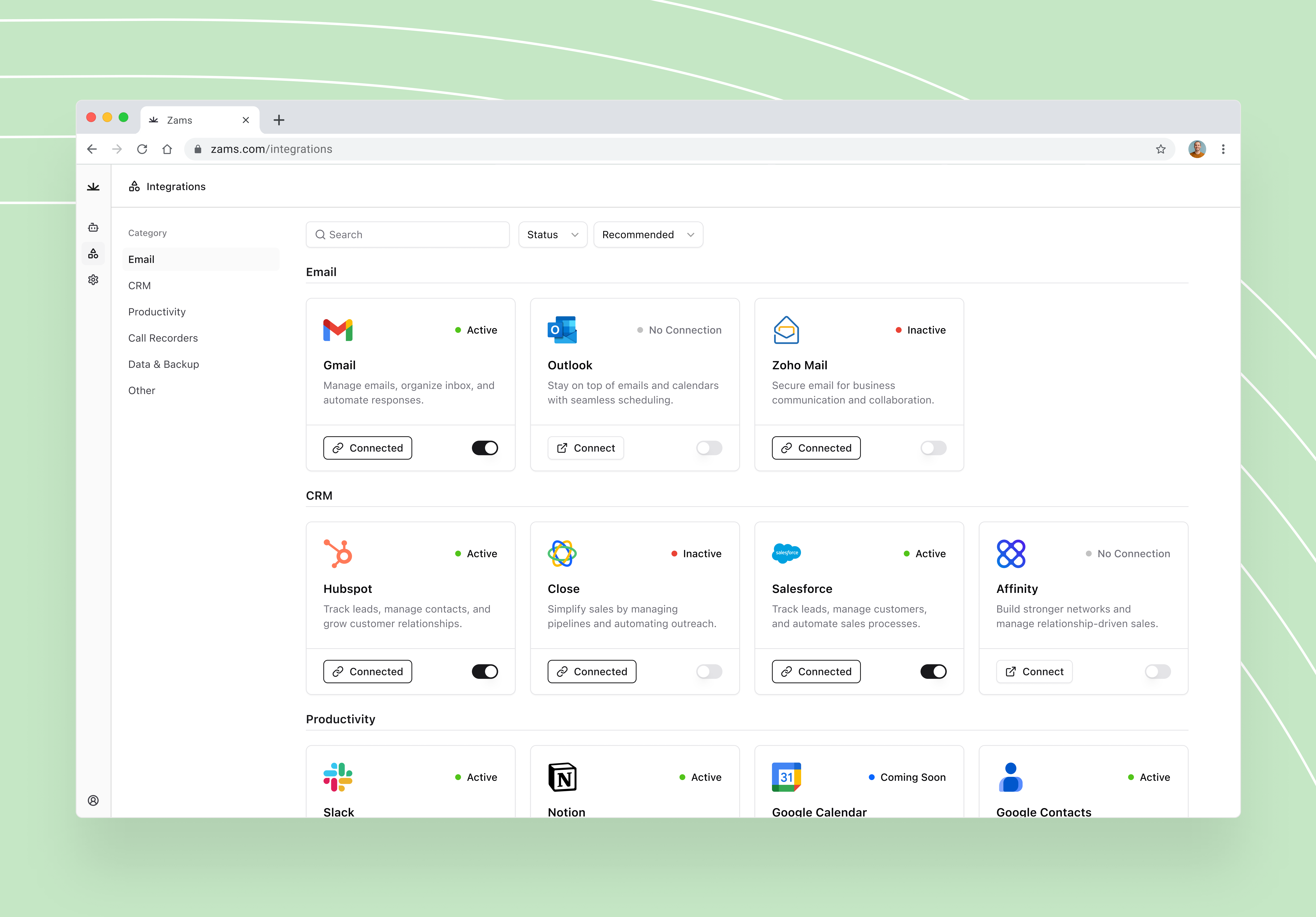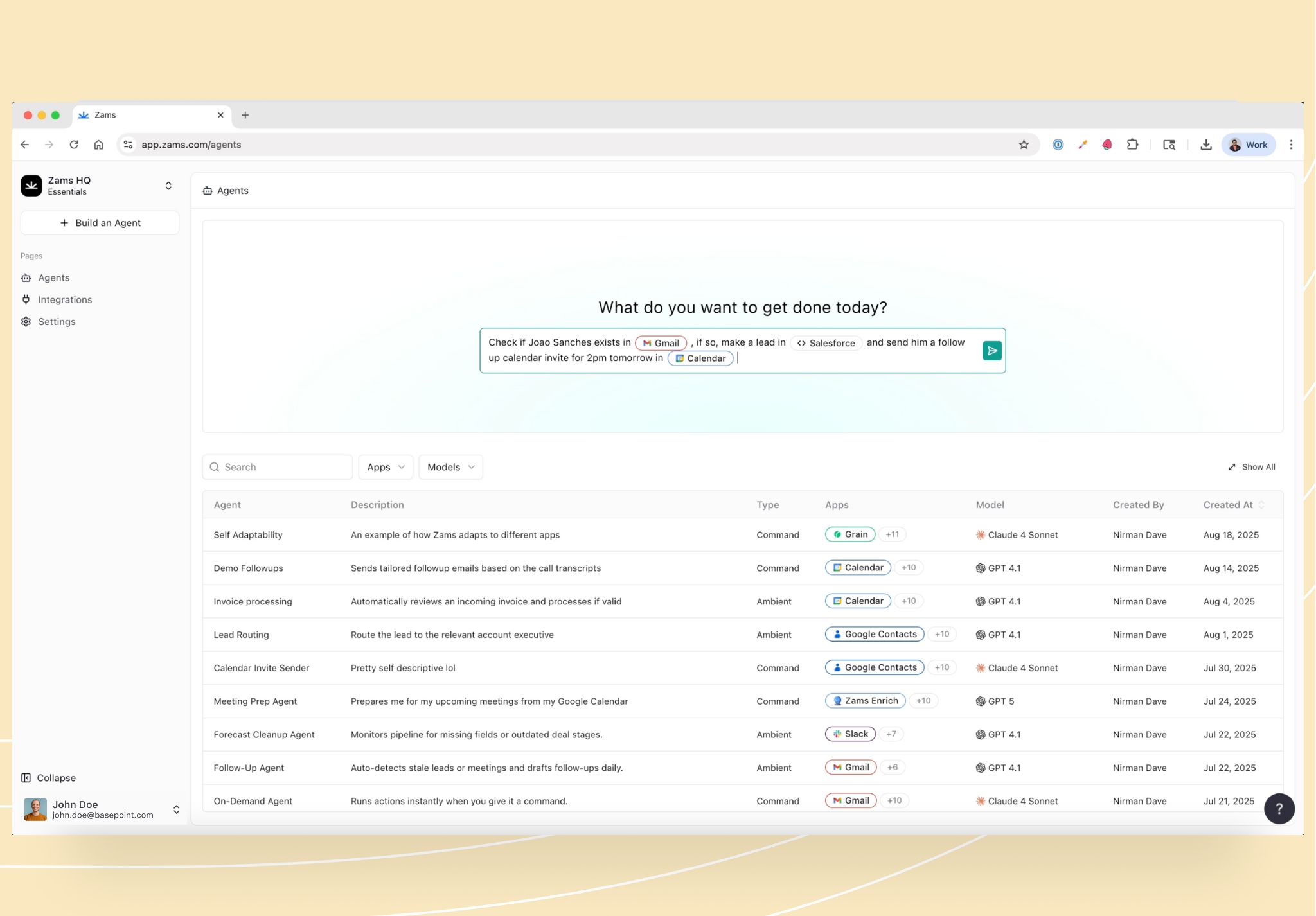Why Marketing Teams Are Drowning in Tools
The hidden drag of disconnected marketing technology stacks
Most B2B teams rely on sprawling marketing technology stacks, but disconnected platforms create data silos and duplicate effort. Without integration, valuable insights get lost, slowing down campaign execution and decision-making. Teams often struggle to assess the value and integration of their existing tools, which can result in inefficiencies and missed opportunities.
Busywork that slows revenue velocity
Manual updates, copy-pasting between systems, and endless reporting eat away at time that should be spent generating revenue. Project management platforms can help organize marketing activities and streamline workflows, reducing manual busywork. By automating workflows, teams eliminate busywork and focus on activities that actually accelerate pipeline growth.
Why more apps don’t always mean more growth
Adding tools doesn’t guarantee better performance. A bloated marketing tech stack often increases complexity and reduces visibility. Streamlined, automated systems allow B2B teams to drive predictable growth with fewer, smarter platforms. In contrast, a robust marketing tech stack integrates essential tools, supporting efficient workflows and sustainable growth.
Stop drowning in tools.
Automate your B2B marketing tech stack with Zams and turn busywork into predictable revenue.

Building a Marketing Strategy for Automation
Aligning automation with business goals
A successful marketing strategy for automation starts with a clear alignment to your business goals. Rather than automating for automation’s sake, identify where automation can make the biggest impact on your marketing efforts whether that’s accelerating lead generation, boosting customer engagement, or improving campaign performance. By strategically deploying marketing automation tools, you can streamline marketing processes, reduce manual workloads, and empower your team to focus on initiatives that drive measurable growth.
To get there, take a close look at your current marketing tech stack. Are your marketing technologies working together to support your objectives, or are there gaps and redundancies? Consider implementing new tools like digital asset management solutions, a robust content management system, or advanced marketing automation platforms to optimize your marketing operations. The right
The Core of a Modern B2B Marketing Tech Stack
Must-have platforms for B2B marketing technology
At the core of every digital marketing technology stack are CRMs, email automation platforms, advertising tools, analytics systems, project management tools, and marketing tools. Together, they provide the foundation for capturing leads, nurturing them, and measuring impact.
Marketing technology stack examples that actually scale
High-growth companies use marketing technology stack examples that prioritize automation and integration. A well-integrated martech stack enables scalability and efficiency by streamlining workflows and connecting essential tools, while successful martech stacks demonstrate how different technologies can be configured to maximize marketing impact. By combining CRM, advertising tech stack, and analytics in one flow, they reduce bottlenecks and build predictable revenue.
Digital marketing tech stack essentials for revenue teams
For B2B sales and marketing alignment, a digital marketing tech stack should include automation for lead routing, campaign reporting, and customer engagement. Integrating tools that enable seamless collaboration and data sharing between the marketing and sales team is crucial for improving lead quality and ensuring both teams work toward shared goals. These essentials help revenue teams scale without drowning in admin.
Automating Your B2B Marketing Tech Stack for Scale
Turning manual workflows into automated systems
Manual campaign management, lead routing, and reporting consume valuable hours. Task management features within automation platforms help teams track progress and ensure accountability. By automating these workflows within your B2B marketing tech stack, teams gain speed, consistency, and scalability.
Cutting wasted time with process automation tools
Process automation tools eliminate repetitive admin like list segmentation, follow-up reminders, and multi-channel reporting. This shift frees marketing and sales teams to focus on strategy and closing deals.
Management tools play a key role in overseeing these automated processes and ensuring smooth operations.
How automation transforms digital marketing technology stack efficiency
A connected, automated digital marketing technology stack ensures data flows seamlessly across platforms. This reduces duplication, accelerates campaigns, and maximises ROI from every marketing effort.
Integrated marketing solutions further help maximize efficiency and ROI by combining analytics, automation, and AI across the digital marketing technology stack.

Marketing Tech Stack Examples That Prove ROI
Real-world digital marketing tech stack examples
Companies that consolidate CRMs, automation platforms, and analytics tools into one flow see shorter sales cycles and clearer attribution. By consolidating customer data across platforms, businesses gain a unified view that enables clearer attribution and more effective marketing strategies. These digital marketing tech stack examples show automation’s direct impact on revenue.
B2B marketing for tech companies using automation to scale
Fast-growth tech companies use B2B marketing technology not just to run campaigns, but to automate lead scoring, nurture workflows, and reporting. This automation, including the use of lead scoring tools to prioritize and evaluate leads, allows them to scale without scaling headcount.
Where advertising tech stacks deliver measurable wins
An optimised advertising tech stack automates campaign bidding, audience segmentation, and performance reporting. The result is higher ad efficiency, reduced spend, and measurable revenue growth.
By leveraging these tools, businesses can also support a more efficient and higher-quality sales pipeline, ensuring that leads are better qualified and sales processes are streamlined.
Connecting Sales, Marketing, and Data in One Flow
Why integration across platforms unlocks predictable growth
Disconnected tools create blind spots that slow revenue velocity. When your B2B marketing tech stack is fully integrated, sales and marketing align around one data source, enabling consistent, predictable growth.
Integration across platforms is a key driver of sustainable business growth, ensuring that your organization can scale efficiently and achieve long-term success.
Syncing CRM, advertising, and sales automation tools
Linking your CRM with advertising platforms and sales automation tools ensures seamless lead capture, attribution, and follow-up. This unified approach strengthens campaign performance and shortens sales cycles. Syncing these tools also enables better tracking and optimization of the customer journey, allowing for more personalized engagement and improved marketing effectiveness across all stages.
Eliminating silos in B2B marketing technology
Silos cause delays, duplicate work, and inconsistent messaging. Breaking them down with an integrated B2B marketing technology stack keeps every team working from the same playbook, driving efficiency and revenue.
Integrated stacks also enhance data management, ensuring consistency and accuracy across teams.

Avoiding Automation Pitfalls in Tech Stacks
Over-automation that kills personalisation
Too much automation can make outreach feel robotic. Smart marketing technology stacks balance scale with authentic touchpoints, ensuring leads still get personalised engagement.
Automation should be used to deliver timely, relevant marketing messages without sacrificing personalization.
Poor integration planning that creates data gaps
Rushing integrations leads to broken workflows and missing data. Careful planning ensures your business process automation tools connect properly and deliver accurate insights across platforms. When considering the integration of any new tool, it is essential to thoroughly plan the process to ensure seamless data flow.
Ignoring feedback loops across marketing and sales teams
Without feedback, even the best automation fails to adapt. Continuous collaboration between marketing and sales ensures automation rules stay aligned with real-world buyer behavior. Involving marketing team members in feedback loops is essential for identifying pain points and refining automation strategies to better fit organizational needs.
Final Thoughts
A bloated stack full of disconnected tools doesn’t drive growth, it slows it down. Automating your B2B marketing tech stack ensures every system works in sync, freeing teams from repetitive busywork and keeping focus where it matters: pipeline velocity and predictable revenue.
Equip Your B2B Marketing Tech Stack with Zams
Zams connects your CRM, ads, email, and automation tools into one command center. No silos, no lag - just real-time insights that turn your stack into a growth engine.
FAQ
What is a B2B marketing tech stack?
A B2B marketing tech stack is a comprehensive collection of digital marketing tools, platforms, and technologies often referred to as marketing tech stacks or MarTech stacks that marketing teams use to attract, nurture, and convert leads. This stack typically includes a content management system (CMS), which enables marketers to easily create, manage, and optimize website content without extensive technical skills. By integrating various marketing tools and martech tools such as analytics, social media management, email marketing, and automation platforms a well-structured marketing stack streamlines workflows, improves brand consistency, and supports overall marketing strategy. When automated, it helps reduce manual tasks and drive predictable growth.
Why should I automate my B2B marketing tech stack?
Automation removes busywork, reduces errors, and ensures tools like CRM, email, and ad platforms work together seamlessly. By automating your marketing tech stack, you can better align your efforts with specific marketing goals, ensuring that every tool and process supports your overall marketing strategies. Automation also helps integrate technology choices with your broader business strategy, so your Martech investments contribute directly to your company’s competitive positioning and operational priorities. Additionally, automation enables you to optimize your marketing budget by reducing manual labor, minimizing waste, and ensuring that spending is focused on tools and processes that deliver measurable results. This boosts efficiency and accelerates revenue.
What are examples of marketing technology stack tools?
Common tools include customer relationship management (CRM) systems, which help manage customer relationships and align sales and marketing efforts; marketing automation platforms for streamlining marketing activities and nurturing leads; analytics dashboards such as Google Analytics for tracking website visitors, user engagement, and integrating with other platforms; and advertising solutions like Google Ads for driving targeted traffic and remarketing.
A comprehensive marketing technology stack also features customer data platforms (CDPs) that connect multiple customer data sources for real-time analysis and personalized marketing, as well as content management system (CMS) platforms like WordPress or Drupal for creating and optimizing website content. Search engine optimization (SEO) is supported by specialized SEO tools for keyword research, content optimization, and rank tracking, all aimed at improving search engine rankings and increasing organic traffic from search engines.
Social media platforms such as LinkedIn, Twitter, and Instagram are managed through social media management tools that facilitate content scheduling, engagement tracking, and analytics, supporting an effective social media strategy and social media marketing efforts. Video marketing platforms like Wistia help drive engagement and conversions through multimedia content.
Other essential tools include marketing attribution solutions for analyzing the impact of different marketing activities and touchpoints, and customer success teams empowered with software to enhance customer retention and deliver personalized experiences. These integrated tools and platforms enable businesses to optimize every stage of the customer journey, from attracting website visitors to managing customer relationships and ensuring long-term loyalty.
How does connecting sales and marketing platforms improve ROI?
By integrating your B2B marketing technology with sales tools, teams share one flow of data. This reduces silos, improves lead handoff, and makes revenue forecasting more accurate.
What pitfalls should I avoid when automating a marketing tech stack?
Over-automation, poor integration planning, and ignoring feedback loops between sales and marketing can undermine results. The key is building a connected, scalable system with the right automation strategy.



